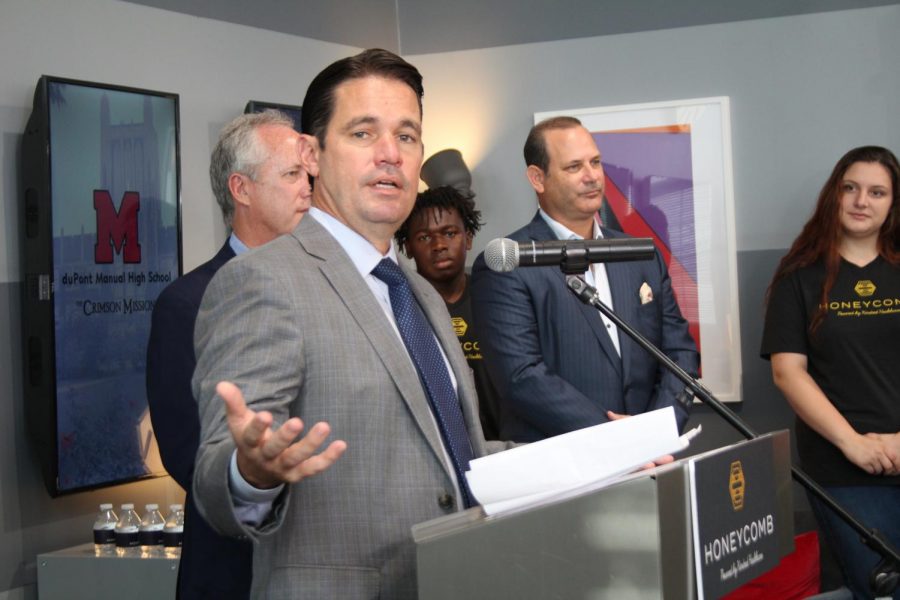For years, medical experts and marijuana enthusiasts in the state of Kentucky and across the United States have been petitioning for the legalization of cannabis for medical use. The task is a daunting one however, as a vast majority of America’s authoritative figures in the worlds of politics and medicine still vehemently oppose all forms of the cannabis plant and reject any notion that it could have any positive benefits.
The United States’ Drug Enforcement Administration (DEA) has classified known controlled substances according to medical value, dependency, and potential for abuse. Schedule I is the most dangerous classification a drug can have and Schedule V is the least dangerous.
Schedule I includes LSD, heroin, ecstasy, and cannabis. These drugs supposedly have “no currently accepted medical use and a high potential for abuse. Schedule I drugs are the most dangerous drugs of all the drug schedules with potentially severe psychological or physical dependence.”
Just to be clear, the United States government says that marijuana is more dangerous and harmful than cocaine and oxycodone (Schedule II), Vicodin and anabolic steroids (Schedule III), and Xanax and Valium (Schedule IV).
Notice that alcohol and tobacco are not on that list. There were 2.5 million alcohol related deaths last year. There were over 5 million tobacco related deaths last year . There are still no reported deaths caused directly by marijuana use. It should be noted that historically Kentucky has relied heavily on the production of tobacco products and bourbon for the better part of its 224 year history. There are more barrels of bourbon in the state of Kentucky than there are people. And according to the Center for Disease Control (CDC) over 37% of Kentuckians use tobacco. Fortunately, or unfortunately depending on your perspective, tobacco and alcohol are so engrained into Kentuckian/American society that the notion of outlawing either one is laughable at best.
Despite these numbers, American establishment still ostracizes those who use the plant and persecute them fiercely. According to the Department of Justice, in 2007 there were 872,720 arrests for marijuana possession or distribution. Out of the total of 2,300,000 arrests marijuana accounted for 38%. This staggering number is what helps America have the highest rate of incarceration in the entire world. This is not a flattering statistic, nor one that you’d think the country that champions itself as the shining beacon of democracy would proudly boast.
CNN correspondent Dr. Sanjay Gupta, who had previously been strongly opposed to the idea of marijuana having positive medicinal effects, recently released a documentary “Weed 2: Cannabis Madness: Dr. Sanjay Gupta Reports” that details why he now fully supports medical marijuana.
Dr. Gupta explains that there are multiple active compounds in cannabis, over 480 in fact, that give the plant its unique chemical make up. Tetrahydrocannabinol (THC) is the psychoactive component of the drug that gets the user “high”. The effects include lightheadedness, relaxation, and giddiness. However, there are other compounds, Cannabidiols (CBD)s, that have been shown to slow down electrons in the brain and prevent seizures. Cannabis has also been proven to decrease pain and increase appetite in patients with cancer, HIV, and other illnesses.
Athletes potentially have a lot to gain from CBD’s, especially when dealing with dangerous injuries such as concussions. Football has long been known as a sport where players are highly susceptible to obtaining these life threatening brain bruises. The National Collegiate Athletic Association (NCAA) has maintained a strict anti-drug policy over the years. Including monitoring athletes’ use of marijuana. But doctors and athletes alike are now petitioning them to look into research on practical uses of cannabis.
“I really think that it’s important for the players’ safety to be the number one priority of everybody involved with the sport. Concussions are a scary part of the game, especially with this new information on brain damage that’s directly linked to shorter life expectancy. I think that the NCAA, as well as the NFL, and even high schools should look into all options for treatment. If marijuana is one of those options then so be it,” said offensive lineman George Dailey (12, HSU). “I’m not talking about using football as an excuse to get high. But if it can genuinely help then I’m not sure why we aren’t looking into it more.”
The Kentucky legislature has spent countless hours deliberating on this topic. Recently the state senate passed a bill allowing the use of marijuana oils for medication pending increased future testing. However, testing will not fully commence until 2015. For some, this just is not enough.
“It feels like they’re just dragging their feet on the whole thing. They need to get over the politics of the situation and just focus on doing what is best for the state,” said Dailey.
The odds of that happening are fairly slim. The General Assembly has pushed medical marijuana to the side of its plate until the research comes out next summer.





